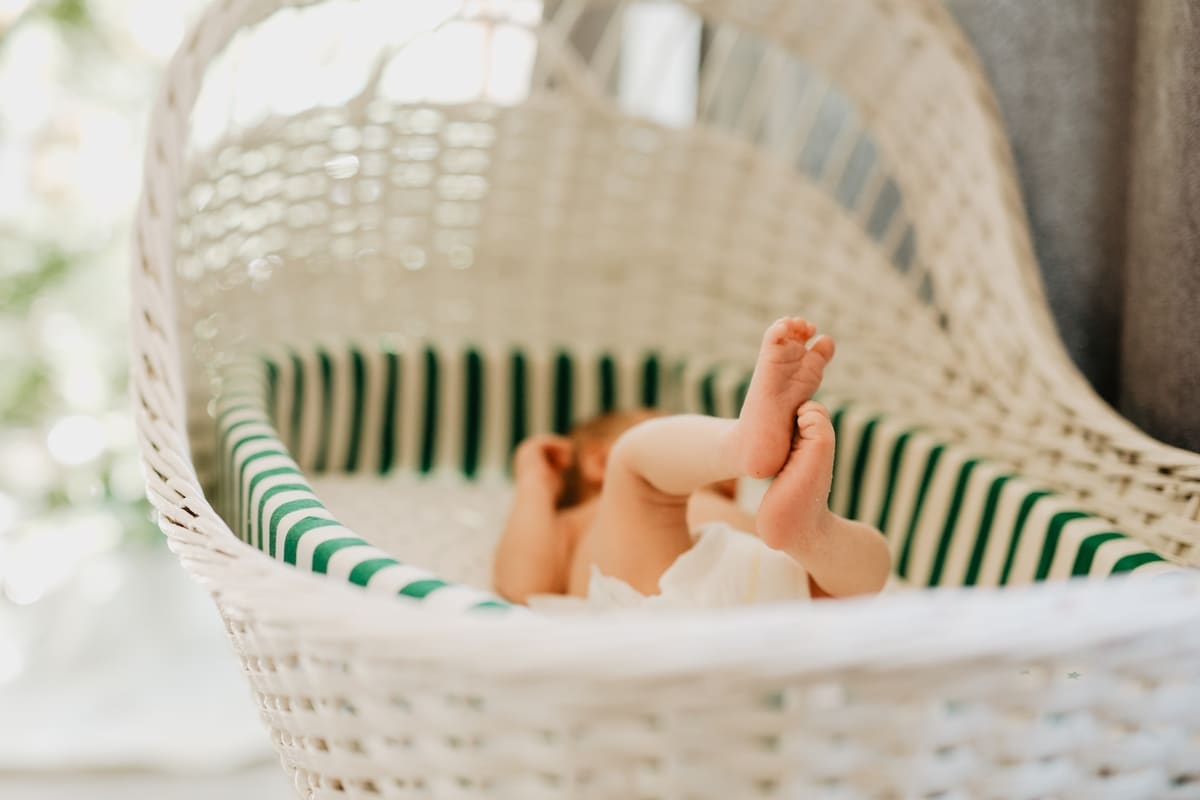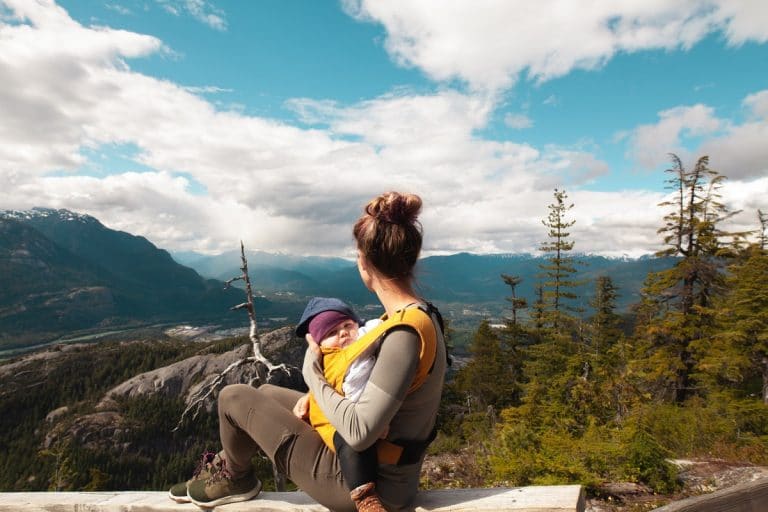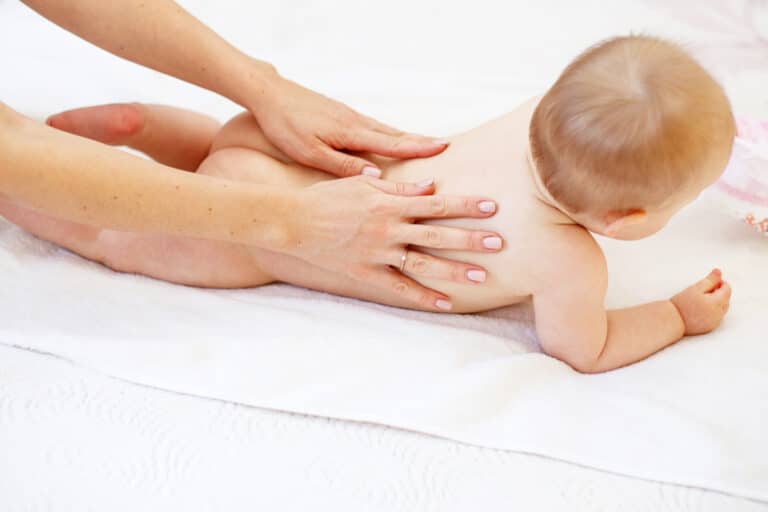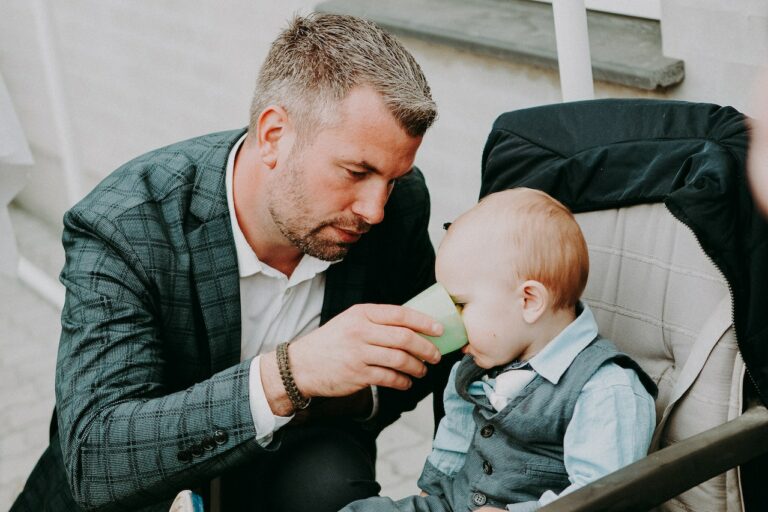Newborns adore sleeping in tight quarters, but as your baby grows, you may be wondering when to move from one cozy nest to another. It can be tricky to know when baby too big for the Bassinet. Some babies will outgrow it before others.
As a general rule, most babies will be ready to transition to a crib between 6 and 9 months old. However, there are some signs that you can look for to help determine if the baby has outgrown the Bassinet. In this blog post, we will discuss the signs that baby is too big for the Bassinet, as well as some tips on what to do when this happens!
In This Article
Baby Too Big For Bassinet
A bassinet or cradle is a bed specifically for babies from birth to about four months old. In various countries, bassinets are required to have sides at least 16 inches (41 cm) high its mandatory for the safety of baby. Most bassinets have removable walls so they can be used as a baby carrier. They are often smaller and lighter than a crib. A bassinet is often portable so it can be moved from room to room or even taken outdoors. Also baby sleeps very well in the bassinet compared to else where. {1}
Most people assume that once their baby outgrows the bassinet, it’s time to move on to crib. However, not all babies are ready for a big kid bed at the same age. So how do you know when your little one is too big for the bassinet? Check out our guide on signs that will help determine when is baby too big for bassinet and when to make the switch.
Bassinets are a great sleep option for newborns, but eventually, your baby will outgrow their bassinet and they will face issues to sleep in a bassinet. Here are a few signs that your baby has outgrown their bassinet and is ready for a crib:
They’re Rolling Over
This is usually the case with newborns. If you notice that your baby is trying to roll over while they sleep, it means they don’t have enough space in the bassinet. When this begins happening, you should start looking for a crib because it offers more space for your little one to move around.
It’s important to keep in mind that some babies start rolling over earlier than others. The average age range is four to six months, but it can happen sooner for some infants while late for some.
If you want to be on the safe side, you can put a rolled-up towel or pillow next to your baby’s chest. This will prevent them from rolling over in their sleep. Just make sure the towel or pillow isn’t too thick, as it might make it difficult for your baby to breathe.
They’ve Crossed The Weight Limit
The bassinet you’re using is a key consideration in this case. Not all bassinets have the same weight capacity or say weight limit. Some may restrict the weight to 6 kg, while others can handle up to 13 kg. Make sure you’ve got the correct size, too.
So, if you’re baby has crossed the weight limit it’s time for an up-gradation to crib or any other sleeping setting. Also make sure if your new crib can fit your baby properly, check to see whether it has a weight capacity. Keep an eye on your child’s weight as well. When they’ve reached the limit, it’s time to switch them over to the crib or another sleep setting.
If you’ve misplaced your instructions, try looking for them on the manufacturer’s website.
They’re Getting Taller
Babies grow quickly, so it’s only natural that they outgrow their bassinets sooner than we’d like. If you notice that your baby’s feet are hanging over the edge of the bassinet, or their head is touching the top, it means they’ve outgrown it.
At this stage, you should start looking for a crib because it offers more space for your little one to move around. It’s also a good idea to invest in a crib that has adjustable height settings. This way, you can lower the mattress as baby grows taller.
They’re Waking Up Uncomfortable
If you notice that your baby is waking up more often than usual, it could be because they’re uncomfortable in their bassinet. This is usually the case when babies are too big for their bassinets. When they move around, they can end up in an awkward position, which can cause them to wake up.
If you think this is the case, it’s time to start looking for a crib because it offers more space for your little one to move around.
They’re Moving Around A Lot
If you notice that baby is moving around a lot in their sleep, it means they don’t have enough space in the bassinet. When this happens, you should start looking for a crib because it offers more space for your little one to move around.
It’s important to keep in mind that some babies move around more than others. If you’re not sure when your baby is moving around too much, try observing them for a few nights. If you notice that they’re constantly moving, it means they need more space and that your baby has outgrown the bassinet.
They’re able to sit up without support
At around four to six months old, your baby will start sitting up without support. When they reach this milestone, it’s a good idea to start thinking about transitioning to a crib. This is because they’ll be able to sit up and look over the edge of the bassinet, which can be dangerous.
A crib will give your baby the support they need as they learn to sit up. It’s also a good idea to start using a crib if your baby is starting to crawl. This is because they’ll be able to get out of the bassinet and possibly hurt themselves.
They’re Out Of Room
This is perhaps the most obvious sign that it’s time to move your baby from a bassinet to the crib. If they seem cramped in their current sleeping arrangement, it means they need more space to stretch out.
A good way to tell if your baby has outgrown their bassinet is by measuring them. Most bassinets are meant for babies who are up to 35 inches long. If your baby is longer than that, it’s time to start using a crib.
You can also try putting your hand in the bassinet to see if there’s enough room for your baby to move around. If not, then it means they need a larger sleeping space.
It’s Getting Difficult to Move Around
Babies are constantly moving, even in their sleep. If you find it difficult to move your baby in and out of the bassinet, it means they’re too big for it. This is especially true if you have a newborn who needs to be fed frequently during the night.
It’s important to make the switch to a crib before the baby starts crawling. Once they start moving around, it becomes even more difficult to transfer them in and out of the bassinet.
Crawling is usually an indicator that your baby is ready for a bigger space. But every child is different, so use your best judgment in this case.
They’re Standing Up
Once your baby starts standing up, it means they need more space. Bassinets are designed for babies who are still sleeping on their backs. When your baby can stand up, it means they can no longer sleep safely in their bassinet.
It’s important to make the switch to a crib before your baby starts walking. Once they start moving around, it becomes even more difficult to transfer them in and out of a bassinet.
If you notice any of these signs, it’s time to make the switch to a crib. A crib will offer your baby more space to move around and stretch out. It’s also a good idea to invest in a crib that has adjustable height settings. This way, you can lower the mattress as your baby grows taller.
Safety Guidelines when transiting baby from a bassinet to crib:
- Make sure that the crib you will be using is sturdy and has no loose screws or missing parts.
- Create a safe sleeping environment for a baby by removing pillows, blankets, stuffed animals, and other objects from the crib.
- Lower the mattress of the crib so it’s positioned at the level of your baby’s chest.
- Place your baby on their back in the center of the crib.
- Use a firm and flat mattress that fits snugly in the crib.
- Make sure your baby’s head is not positioned too close to the bars of the crib.
- Keep an eye on your baby in the middle of the night while they sleep and check on them regularly in day time too.
- Never leave your baby unattended in the crib. Always stay close by in case they need you.
- Make the baby bed in the same room as previously.
If you have any concerns about your baby’s safety, consult with your pediatrician. {2}
Tips on what to do when Baby is Too Big for Bassinets:
Start with the mattress that came with the bassinet. If it is too small, you can buy a foam topper to make it bigger.
If your baby is rolling over, put pillows around the bassinet so they cannot fall out.
When the baby starts to sit up, it is time to move to a crib. You can buy a mattress for the crib that is the same size as the bassinet mattress.
At what weight do you stop using a bassinet?
Generally bassinet weight limit is around 6 kg but few bassinet manufacturers even provide with 13 kg limit. So it’s best to check what the weight limit of your bassinet is and stop using it once the baby crosses the weight limit. Although it is on personal preference but is best to stop using it for the safety of baby.
Can a baby sleep in bassinet if rolling over?
Yes, baby can sleep in a bassinet even if rolling over. There are a few reasons for this. First, bassinets are usually designed with firm sides that will help support baby and keep them from rolling out. Additionally, most bassinets come with some type of bedding or mattress that will be firm enough to provide adequate support for baby even if she does roll over. Finally, some bassinets also have an adjustable bottom so that you can make it more shallow if needed to further prevent baby from rolling out.
What Types of Bassinets Are Out There?
There are many types of bassinets on the market, from traditional to modern. Traditional bassinets are typically made of wood or wicker and have a simple, rectangular design. Modern bassinets come in all shapes and sizes, with many different features.
Some bassinets even come with built-in rocking mechanisms or vibrating functions to help soothe baby. If you’re not sure what type of bassinet is right for you, it’s best to consult with your pediatrician or a child development specialist.
Conclusion:
There is no definitive answer as to when baby is too big for a bassinet. However, it’s generally recommended that you make the switch to a crib before your baby starts walking. Additionally, if you notice any of the signs listed above, it’s probably time to move baby to a crib. Remember to follow the safety guidelines when transitioning baby to a crib, and always consult with your pediatrician if you have any concerns. Thanks for reading! We hope this was helpful.
Reference:
{1} Bassinets: HealthyChildrenOrg – (2013)
{2} Choosing Crib: HealthyChildrenOrg – (2021)











